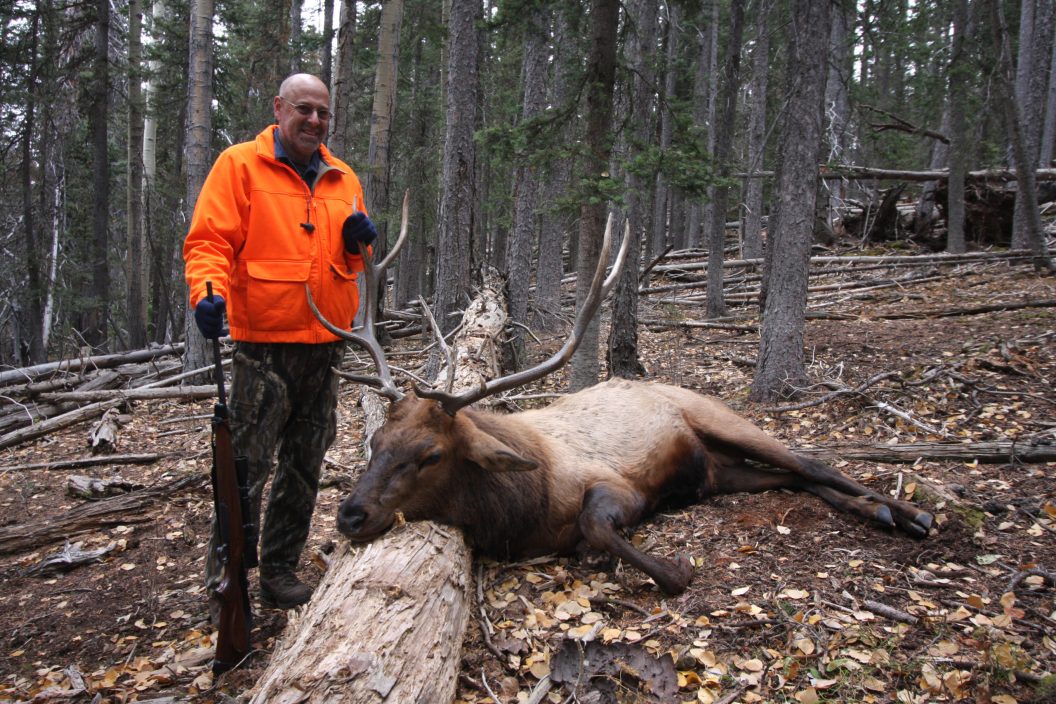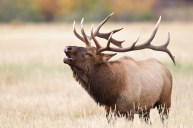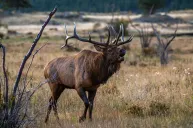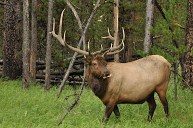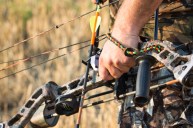These six elk hunting techniques for rifle season will increase your odds of success over every other hunter in the woods this season.
I've listened to rifle hunters from across the country say over and again that once rifle season comes they can't seem to find any bull elk. When they can't find the bulls during the season's opener, they wait for the bulls to come to them, usually from a high vantage point after late season snows push the herd of elk into the low country. But waiting is risky, because if the snows don't come, the limited time left in the season is wasted.
At the risk of bucking conventional wisdom, I will say that it is a mistake to wait until the late season for the bulls to come down. And to make sure I dig a hole that's tough to get out of, I'll also say that any hunter who can't find elk in the early rifle season is doing something wrong. In order to find bulls, you have to go where the bulls are. If that sounds overly simplified, it is. But it's true.
So with rifle season fast approaching, I've compiled the top six overlooked rifle elk hunting techniques that will help you put elk meat in your freezer.
1. Glass in thick cover
Glassing for elk on open hillsides often leads to elk sightings, especially cows and young bulls. But some of the best sighting can be done in thick cover. Slipping quietly through thick timber and glassing even in the thickest fir re-growth areas can reveal big bulls. They do not get large without being smart, especially on public land, which makes this a dynamite elk hunting tactic.
2. Find flat spots amid steep slopes
You should invest in topo maps of where you are hunting and seek out the flat spots at the head of drainages. It's easy to get overwhelmed when hunting elk in big country like Montana or Colorado. Hiking 15 miles in a single day with no real plan is about as productive as staying in camp all day. Find areas that are likely to hold bulls. Thick flat areas where water starts flowing at the top of a creek drainage is as good a starting point as you can get. This single tip may be the best time saver you'll ever learn when hunting elk.
3. Pay attention to the wind
Many elk hunters seem to ignore the wind. This is one of the fundamentals of hunting and should not be overlooked. We know this is a rifle article, but it applies double when you are bowhunting and need to get in close. If you have to hike an extra mile to approach an area from downwind, it will be time well spent. After hiking three or four miles over rough terrain, now is not the time to avoid a little more physical exertion.
4. Be in shape
Elk hunting hurts when you're not in shape! Hiking five miles into the backcountry to where the elk are requires motivation, carrying 70 pounds of meat five miles takes stamina. Being in shape for elk hunting isn't the same as being in shape for deer hunting or even in shape for a marathon. It's different. Be ready to hike up, down, over blow downs, carry a heavy pack and be able to run when you need to. Be in shape before you get to the mountain.
5. Slow down
I have a friend who is in excellent shape but he hikes ten miles in a single day and often complains about not seeing elk. It is much better to spend a little more time sneaking through a prime area than to put on miles in search of an elk.
6. Hunt in the afternoon and be where the elk are until dark
Our last elk hunting tip is a simple one neglected by too many each elk season. Many times I see hunters heading into elk country early who leave at midday. However, this is a mistake and mirrors a common one made by whitetail hunters too. You cannot take an animal if you are back at the truck eating lunch or sitting at home instead of the elk woods. Five of my last six elk were shot several miles from my truck between 2 pm and 4 pm. Hunt until dark and be prepared to hike out with a headlamp. It often makes for an exhausting day in the woods, but it is worth it. Staying in the woods back where the elk are will pay huge dividends.
And after all, you probably plunked down a decent amount of change for that tag, no matter if it was over-the-counter, or a drawn tag for a hot area. You might regret not putting in the effort later. Elk is a grueling hunting experience that rewards those who put in the work. Especially if you are not using an outfitter and going with a DIY approach. Know your hunting area. Know what fresh sign looks like, and know your equipment. This applies not just to rifle hunting, but archery elk hunting too.
Early rifle season elk don't just disappear after the rut is over. Knowing the areas where to find elk and hunting in those areas all day will consistently put you in spitting distance of bulls. Slowing down, and glassing will put them in your crosshairs.
Products featured on Wide Open Spaces are independently selected by our editors. However, when you buy something through our links, we may earn a commission.
NEXT: THE AXIS DEER AND HOW THEY'RE IMPACTING PARTS OF THE UNITED STATES
WATCH
